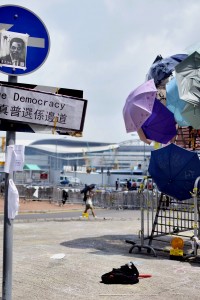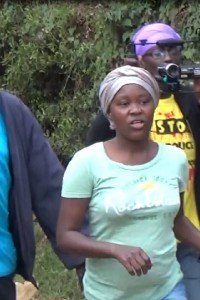How does social division stop marginalised people in Kenya from engaging on accountability?
Institute of Development Studies
“Domestic and street violence is an everyday occurrence. Evictions are common, not only for non-payment of rent, but also for reasons of politics and ethnicity. Government appears to do little in any systematic way.”
17 million
people in Kenya live below the poverty line
33 million
Kenyans have mobile cellular subscriptions
November 2014 End date
April 2016
Issue
Among Kenya’s marginalised classes, there is a continuous buzz of complaint. Yet when asked about their views on civil society organisations, people on the streets and in rural villages often speak of an inaccessible quasi-government doing unaccountable things, whose people communicate in networks that are quite different from those of the marginalised classes. Different groups and individuals have been known to aggregate together and create effective public change, but it is not easy to do so.
New technologies have not been as much of a help in this as had been hoped, so it is important to understand where the new modes of communication reproduce division, and where they are creating new opportunity.
We need to understand whether amplifying or rechanneling voice through different forms of technology and through new forums and mechanisms is going to change the conditions that make most voices unimportant. The role of technology in changing the configuration of voice and responsiveness will only be understood when we look at how divisions in society are reproduced both online and off.
Project
Among the many civil society organisations in Kenya, there are a small number that recognise in their activities – rather than just their rhetoric – the effect of inequality on civil society strength, and are trying to create alliances across class. These include Bunge La Mwananchi, the people’s parliament. IDS is working alongside Bunge to explore:
- How does voice about major citizen grievances work among marginalised people?
- Why does it appear that there is a division between marginalised and middle class civil society?
- What difference has the web made to how marginalised people speak, learn and act together on grievances and in the connection between working and middle class civil society?
What has Bunge La Mwananchi learned about crossing the lines of social difference?
Partner
The lead researcher for this project is Patta Scott-Villiers, a research and teaching fellow at the Institute of Development Studies with the Power and Popular Politics cluster. She has worked for 25 years on issues of voice and power, primarily in the Horn and East Africa, but also in UK, Eastern Europe and other parts of the world.
The action research team comprised long-time Bunge organisers Gacheke Gachihi and Cidi Otieno, alongside experienced action researchers Diana Muthoni Ndung’u and Nathaniel Kabala.
Learning
In January 2016, findings from the action research were reported in an article that asks how Bunge La Mwananchi has built and sustained its power the in the face of co-option, and social and geographical divisions.
Later in 2016, funding for this work was extended to build on the learning from the action research, helping establish a Social Justice and Movement Building (SJMB) Fellowship Programme, and supporting training in participatory video.
The SJMB programme, which ran from September to November 2016, took place in the Mathare and Kangemi slums of Nairobi. Fellows – who live in these communities – were supported to learn about social justice and human rights, documentation and reporting of rights violations, social mobilisation and communication, and enforcement of social justice and human rights. For every day of theoretical learning, they were involved in five days of practical implementation of social justice work.
The participatory video component involved eight young people in learning to use video to share the story of the research and communicate it in the community, and to reflect on the potentials and challenges of using video to connect across communication divides.
Follow Bunge La Mwananchi (@Bulamwa) on Twitter for updates on the SJMB and the participatory video work.
Publications
-
 View publication
View publication
Men and women of words: how words…
-
 View publication
View publication
Connecting communication: using video to open spaces…